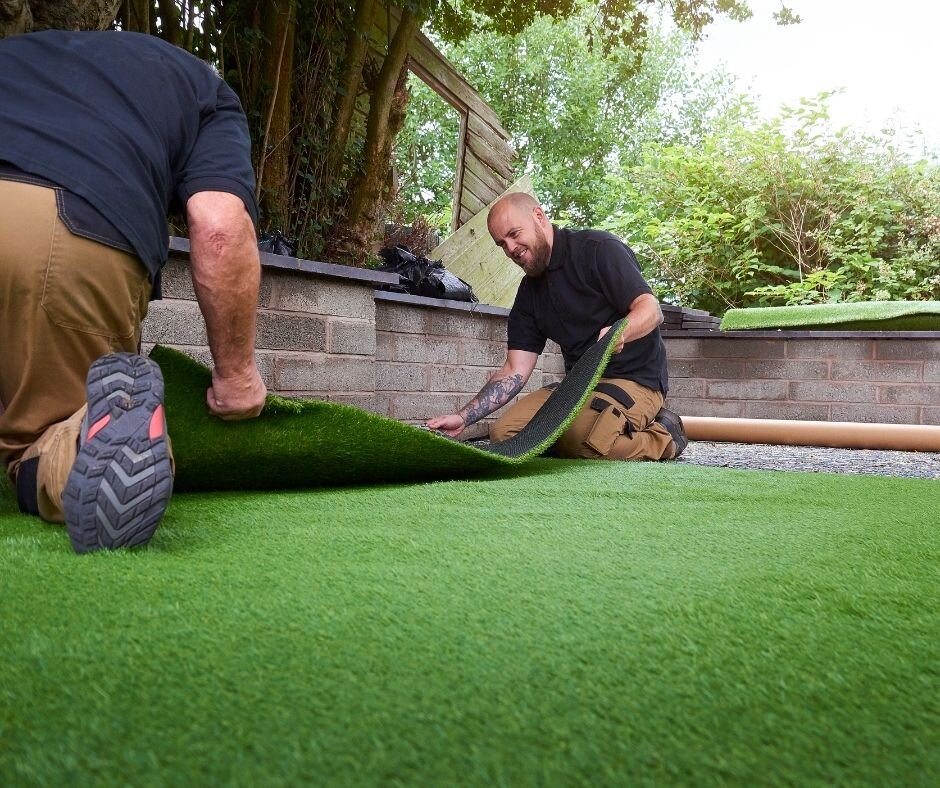How to Install Artificial Turf
There’s something about the look of artificial turf that takes a backyard to the next level. This might leave you wondering how much it costs to have artificial grass installed. Although it looks remarkable, will it fit within your home improvement budget? Luckily, there are step-by-step installation instructions you can follow to install your DIY artificial grass.
If you want to learn how to install artificial turf, you’ve come to the right place. Our turf installation guide explains what to put under artificial grass, how to lay artificial turf, and more.
Remove Natural Grass
Before you can install artificial turf in your yard, you need to remove the natural lawn. Ground preparation is the key to a successful installation project and isn’t something that should be skipped! Begin by weeding your yard to remove grassroots and weeds, ensuring that they don’t continue to grow underneath your artificial turf and cause problems down the line. If you’re spraying the weeds in non-toxic weed removal, make sure you do this at least two weeks before your scheduled installation day so it has time to work properly. Once any weeds have been taken care of, you can begin disposing on the top few inches of soil.
Lay Your Base Material
Now that your yard has been prepped, it’s time to lay your base material that will go below your turf lawn to absorb water and prevent uneven pooling. Your base material can consist of stones or gravel smaller than 3/8 inches, crushed rock, or decomposed granite. You will need enough base material to add a three to four-inch layer on top of the soil to ensure your yard has adequate drainage.
Roll Out Your Artificial Grass
Once the base material is in place, it’s time for the fun part — laying out your artificial grass! Roll out your turf lawn over the area where it is being installed and allow it to sit in the sun for half an hour. If you skip this step, the artificial turf may expand after you cut it to fit the space, causing you to do rework by recutting the grass. Keep in mind that if you are working with multiple rolls of artificial turf, you want to ensure the blades are all aligned in the same direction for a seamless and natural appearance.
Cut Turf to Size
After rolling out the artificial turf over top of the area where it’s being installed, you will need to make the appropriate cuts. Using carpet cutters or razor knives you should cut the turf to the desired shape, allowing for an extra 1/4’’ to 1/2’’ on the edge of your border to allow for the perfect fit. This is also when you should use artificial grass seam tape or glue to fuse your sheets of turf if you are installing multiple pieces. Allow the glue to set for at least 15 minutes before moving onto the next step.
Secure the Perimeter
Using the 1/4’’ to 1/2’’ of extra turf you left on the edge, tuck the artificial turf into the border of the installation area using a metal putty knife and hammer. For added stability, use non-galvanized turf nails or staples to secure the turf to the ground about every six inches along the outside perimeter. Additional nails and staples should be used on the insides areas of the turf to prevent the turf from coming loose.
Apply Infill to the Turf
To help your synthetic grass look and feel as real as possible, you need to apply infill once it’s been secured in place. Not sure what to put under artificial grass? The manufacturer of your artificial turf will determine the best type of infill to use, which can range from acrylic-coated sand to crumb rubber. Once you’ve narrowed down the best infill option, use a drop spreader to event disperse the infill throughout the lawn. After the infill has been spread throughout the yard, you need to brush it into the artificial turf until it sinks completely below the grass, helping the blades stand up in place.
If you’re looking to save money on artificial grass installation, a do-it-yourself approach is possible, and we have the turf that’ll get the job done. Simply fill out our contact form with your order and project details to get started and our representative will have you taken care of.

